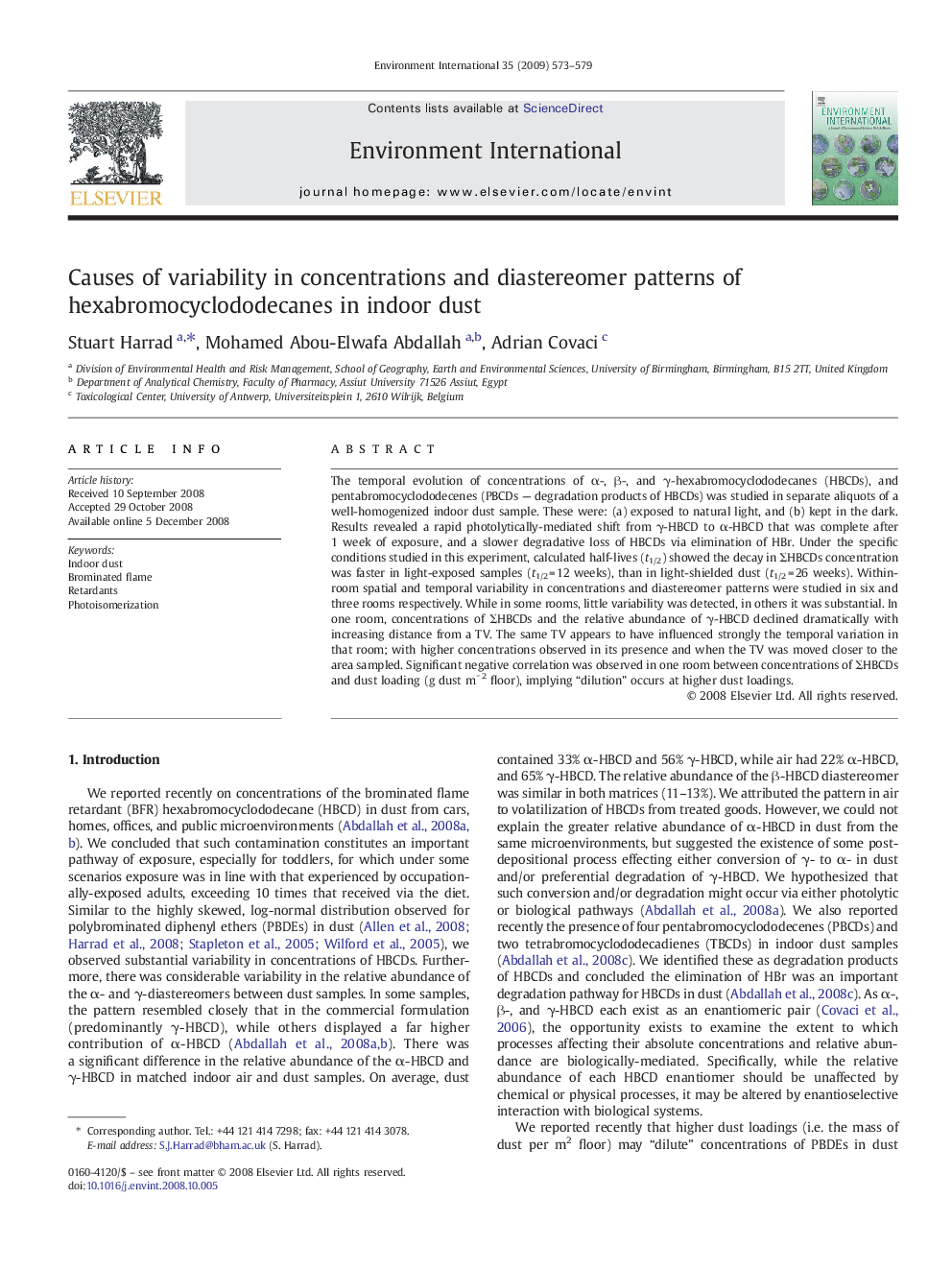| Article ID | Journal | Published Year | Pages | File Type |
|---|---|---|---|---|
| 4423542 | Environment International | 2009 | 7 Pages |
The temporal evolution of concentrations of α-, β-, and γ-hexabromocyclododecanes (HBCDs), and pentabromocyclododecenes (PBCDs — degradation products of HBCDs) was studied in separate aliquots of a well-homogenized indoor dust sample. These were: (a) exposed to natural light, and (b) kept in the dark. Results revealed a rapid photolytically-mediated shift from γ-HBCD to α-HBCD that was complete after 1 week of exposure, and a slower degradative loss of HBCDs via elimination of HBr. Under the specific conditions studied in this experiment, calculated half-lives (t1/2) showed the decay in ΣHBCDs concentration was faster in light-exposed samples (t1/2 = 12 weeks), than in light-shielded dust (t1/2 = 26 weeks). Within-room spatial and temporal variability in concentrations and diastereomer patterns were studied in six and three rooms respectively. While in some rooms, little variability was detected, in others it was substantial. In one room, concentrations of ΣHBCDs and the relative abundance of γ-HBCD declined dramatically with increasing distance from a TV. The same TV appears to have influenced strongly the temporal variation in that room; with higher concentrations observed in its presence and when the TV was moved closer to the area sampled. Significant negative correlation was observed in one room between concentrations of ΣHBCDs and dust loading (g dust m− 2 floor), implying “dilution” occurs at higher dust loadings.
